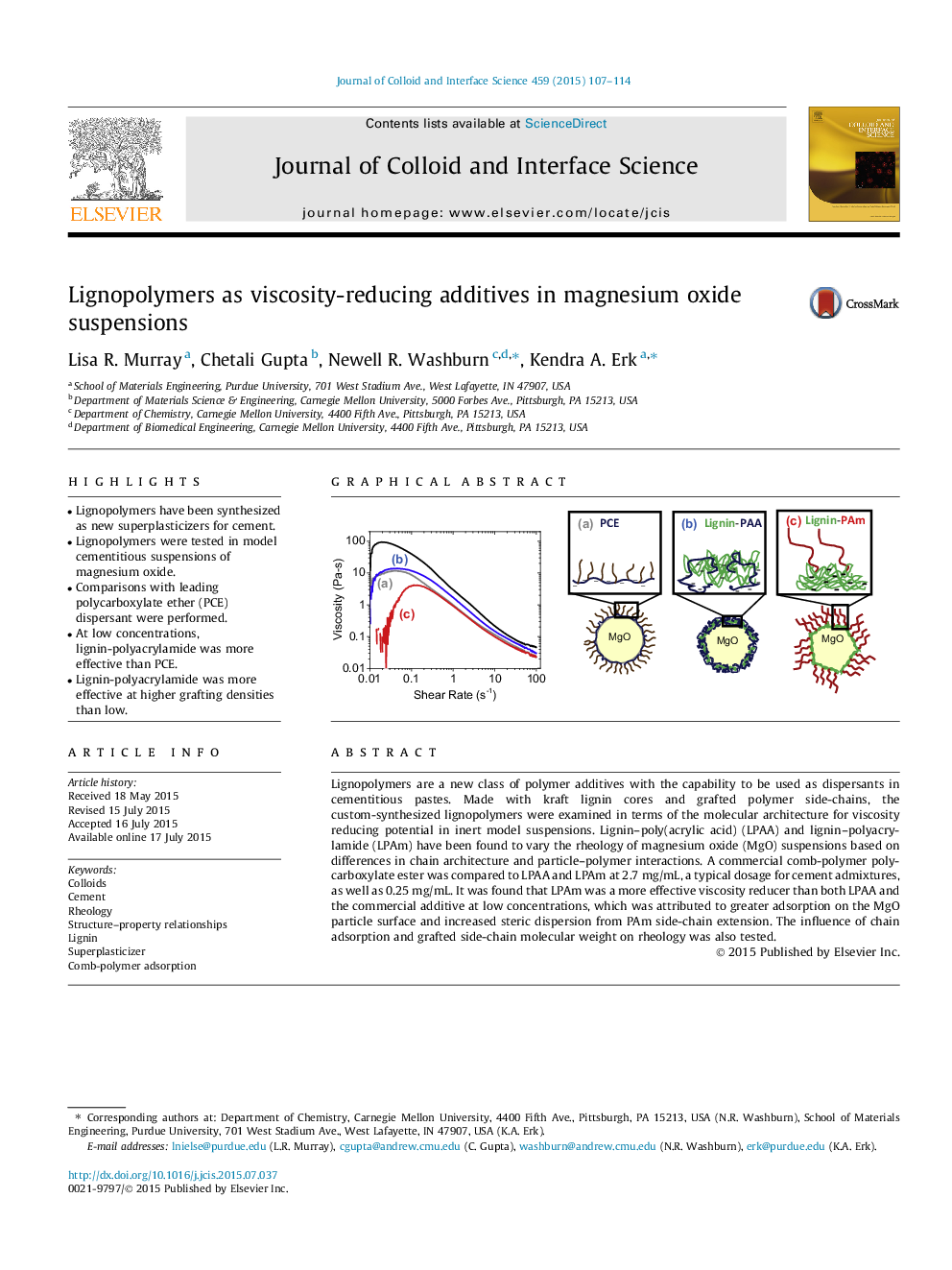| Article ID | Journal | Published Year | Pages | File Type |
|---|---|---|---|---|
| 606600 | Journal of Colloid and Interface Science | 2015 | 8 Pages |
•Lignopolymers have been synthesized as new superplasticizers for cement.•Lignopolymers were tested in model cementitious suspensions of magnesium oxide.•Comparisons with leading polycarboxylate ether (PCE) dispersant were performed.•At low concentrations, lignin-polyacrylamide was more effective than PCE.•Lignin-polyacrylamide was more effective at higher grafting densities than low.
Lignopolymers are a new class of polymer additives with the capability to be used as dispersants in cementitious pastes. Made with kraft lignin cores and grafted polymer side-chains, the custom-synthesized lignopolymers were examined in terms of the molecular architecture for viscosity reducing potential in inert model suspensions. Lignin–poly(acrylic acid) (LPAA) and lignin–polyacrylamide (LPAm) have been found to vary the rheology of magnesium oxide (MgO) suspensions based on differences in chain architecture and particle–polymer interactions. A commercial comb-polymer polycarboxylate ester was compared to LPAA and LPAm at 2.7 mg/mL, a typical dosage for cement admixtures, as well as 0.25 mg/mL. It was found that LPAm was a more effective viscosity reducer than both LPAA and the commercial additive at low concentrations, which was attributed to greater adsorption on the MgO particle surface and increased steric dispersion from PAm side-chain extension. The influence of chain adsorption and grafted side-chain molecular weight on rheology was also tested.
Graphical abstractFigure optionsDownload full-size imageDownload high-quality image (271 K)Download as PowerPoint slide
